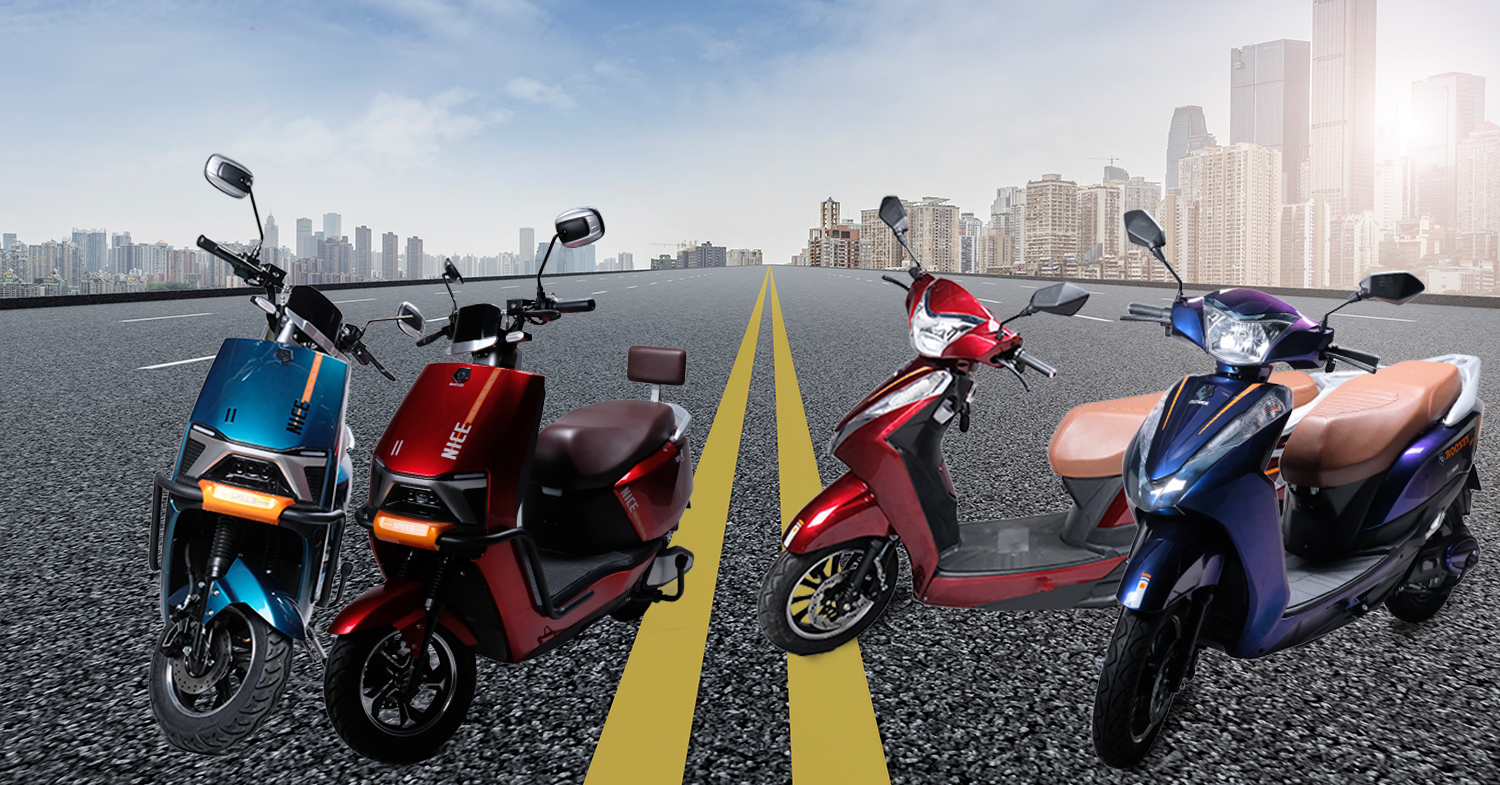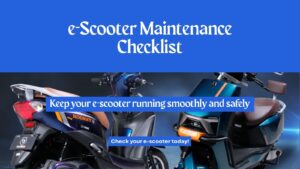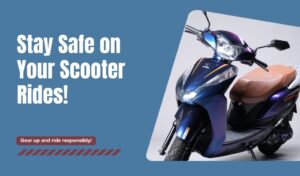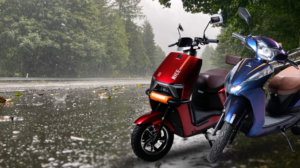Understanding Your E-Scooter’s Battery
The heart of any electric scooter, or e-scooter, is its battery. The most common types used in e-scooters are lithium-ion batteries, which provide an optimal balance between weight, cost, and performance. Understanding the capacity of your battery is crucial, as it directly correlates with the distance you can travel on a single charge. E-scooter batteries are typically rated in watt-hours (Wh), and this measurement indicates how much energy the battery can store. A higher capacity battery allows for longer rides without the need for frequent recharging.
Charging cycles are also an essential aspect of battery life. Each time you charge your e-scooter’s battery from empty to full, it counts as one cycle. Most lithium-ion batteries have a lifespan of 300 to 500 charging cycles before they begin to degrade significantly. Therefore, managing your charging habits can greatly influence the longevity of your battery. Avoiding complete discharge and only charging your battery to about 80% capacity when possible can extend its lifecycle.
Environmental conditions play a vital role in the performance of your e-scooter’s battery. Extreme temperatures, both high and low, can adversely affect battery efficiency. For instance, cold weather can lead to decreased range, while high temperatures may cause the battery to overheat, risking damage. Regular maintenance, such as keeping the battery clean and ensuring the contacts are free from corrosion, can also enhance its performance. It is essential for e-scooter owners to familiarize themselves with battery maintenance best practices to ensure satisfactory performance and extended riding time. Understanding these technical aspects will empower riders to make informed decisions that maximize the capabilities of their electric scooter.
Optimal Riding Techniques
Utilizing an electric scooter efficiently can significantly impact battery life and enhance the riding experience. One of the primary factors in optimizing battery consumption is maintaining a steady speed. Riding at a consistent pace not only conserves energy but also leads to a smoother ride. Frequent changes in speed, particularly rapid acceleration and sudden braking, can drain the battery more quickly. Therefore, adopting a fluid riding style can yield longer distances on a single charge.
Many modern electric scooters offer eco-friendly modes, designed specifically to extend battery life. If your escooter is equipped with such a feature, it is prudent to utilize it when possible. This mode often restricts power output, thereby maximizing efficiency and enabling a more extended range between charges. Riders should familiarize themselves with the different riding modes available to determine which setting is most appropriate for their journey.
In addition to speed management, body position and weight distribution play crucial roles in optimizing battery usage. Keeping a low and balanced posture on the electric scooter not only aids in stability but can also improve aerodynamic efficiency. Furthermore, minimizing additional weight on the scooter, when feasible, can contribute to better energy management. It is advisable to carry only essential accessories and maintain a streamlined riding form.
By implementing these riding techniques, users can experience enhanced battery performance, allowing for extended rides with minimal recharging. Maximizing distance traveled on an electric scooter involves not just technological features but also the rider’s mindful behavior. Therefore, adapting to these optimal riding practices is beneficial for anyone looking to get the most out of their escooter.
Regular Maintenance and Care
To ensure the longevity and performance of your electric scooter, regular maintenance and care are paramount. Just like any mode of transportation, an escooter requires consistent checks and upkeep to function optimally. Key areas of focus include tire pressure, brake adjustments, and cleanliness, all of which significantly influence your scooter’s performance and your riding experience.
First, maintaining the correct tire pressure is crucial. Under-inflated tires can increase resistance, leading to decreased battery efficiency and range. It is advisable to check the tire pressure weekly and inflate the tires to the manufacturer’s recommended levels. Similarly, brakes are an essential safety feature of any electric scooter. Routine adjustments to the brake pads and cables will ensure they respond effectively when required. Regular checks can prevent accidents and maintain the overall integrity of your scooter.
Keeping your scooter clean is another vital maintenance step. Regularly removing dirt and debris from the scooter not only enhances its aesthetic appeal but also prevents wear and tear on internal components. Use a soft cloth to wipe down surfaces and ensure that any exposed electrical components remain dry and clean. Additionally, storing your electric scooter properly can contribute to its longevity. When not in use, it is best to keep it in a cool, dry place to avoid environmental damage, which can affect the battery’s health and overall functionality.
Battery care plays a significant role in maximizing the life of your electric scooter’s battery. To maintain battery health during periods of inactivity, ensure the battery is charged to around 50% before storing it. Avoid leaving the battery fully charged or completely drained for prolonged periods, as this can lead to irreversible damage. By adhering to these maintenance guidelines, you can significantly extend your electric scooter’s operational life and enjoy longer rides with enhanced reliability.
Planning Your Route Wisely
One of the most effective strategies to maximize your electric scooter’s battery life is through careful route planning. When embarking on a journey, it is essential to consider the terrain, traffic conditions, and available charging stations. Flat surfaces are generally the most efficient for electric scooters as inclines require more energy, leading to quicker battery drain. Therefore, selecting routes that offer flatter terrains can significantly improve your overall riding experience and allow for longer rides.
Moreover, it is prudent to avoid busy traffic areas where frequent stops and starts are unavoidable. Such conditions not only interrupt your momentum but also put extra strain on your electric scooter’s battery as it frequently accelerates and decelerates. Opting for quieter roads or dedicated bike paths will not only enhance your riding comfort but can also provide a steadier speed, ultimately conserving battery life.
In addition to choosing the right terrain and traffic situation, being aware of your electric scooter’s battery levels is crucial. Prior to your journey, ensure that all necessary preparations are made, including checking your battery status. As you plan your ride, keep the locations of charging stations in mind, especially for longer trips. Knowing where you can recharge your electric scooter along the way can alleviate any anxiety regarding battery levels, allowing you to enjoy your ride with confidence. There are various apps and online tools available that can assist in plotting these routes effectively.
By integrating these strategies into your traveling habits, you can ensure a more sustainable and enjoyable experience with your escooter for all your commuting needs. Efficient planning will not only extend the battery life but also enhance your overall journey.









Leave a reply